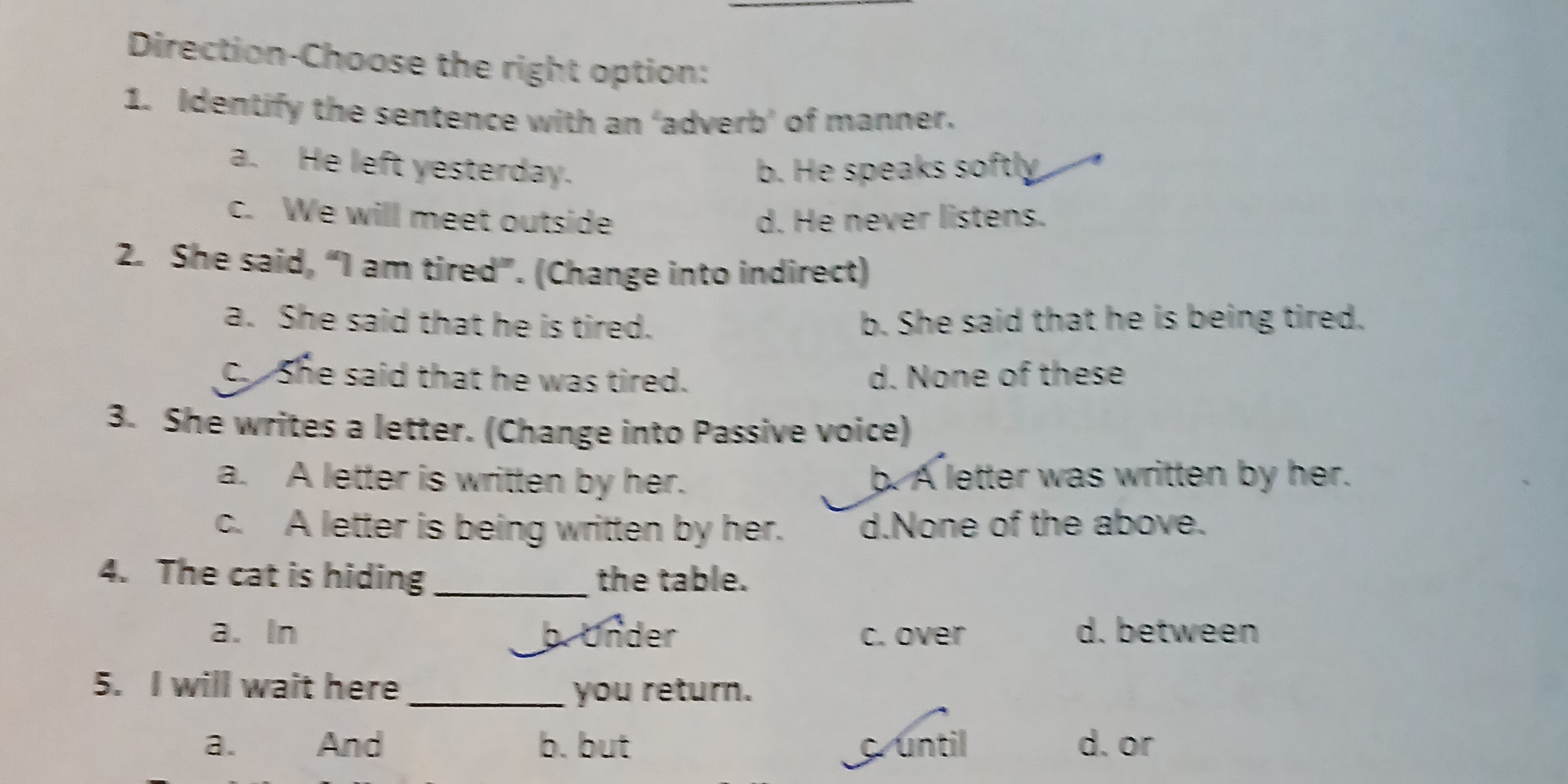Solve the multiple choice questions.

Understand the Problem
The image contains a set of multiple-choice questions related to English grammar. These questions cover topics such as identifying adverbs of manner, changing sentences into indirect speech, converting sentences from active to passive voice, and using appropriate prepositions and conjunctions.
Answer
1. b. He speaks softly, 2. c. She said that he was tired, 3. a. A letter is written by her, 4. b. Under, 5. c. until
- b. He speaks softly
- c. She said that he was tired.
- a. A letter is written by her.
- b. Under
- c. until
Answer for screen readers
- b. He speaks softly
- c. She said that he was tired.
- a. A letter is written by her.
- b. Under
- c. until
More Information
Here's a breakdown of why each answer is correct:
- b. He speaks softly: 'Softly' is an adverb of manner describing how he speaks.
- c. She said that she was tired: When changing direct speech to indirect speech, the tense usually shifts back one step. 'Am' becomes 'was'. Also, 'I' becomes 'she' to reflect who is being referred to.
- a. A letter is written by her: In passive voice, the object of the active sentence ('a letter') becomes the subject, and the verb is changed to a form of 'to be' + past participle ('is written').
- b. Under: 'Under' is the correct preposition to indicate that the cat is hiding beneath the table.
- c. until: 'Until' is the correct conjunction to indicate that you will wait up to the point of their return.
Tips
A common mistake in passive voice is not changing the tense of the verb 'to be'.
AI-generated content may contain errors. Please verify critical information